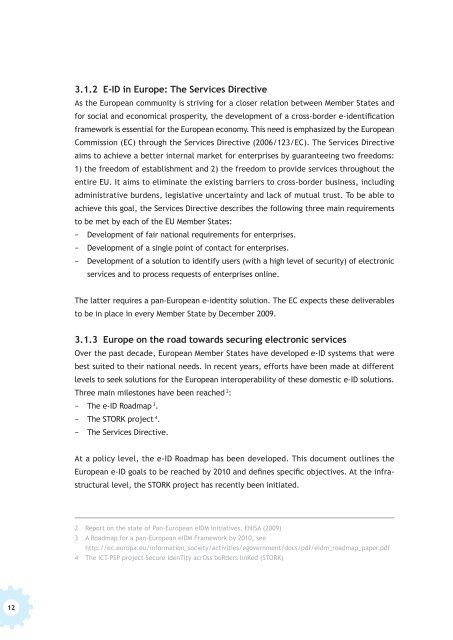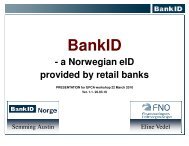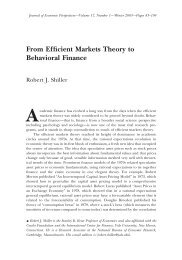A Network Approach to E-identification
A Network Approach to E-identification
A Network Approach to E-identification
- No tags were found...
Create successful ePaper yourself
Turn your PDF publications into a flip-book with our unique Google optimized e-Paper software.
3.1.2 E-ID in Europe: The Services Directive<br />
As the European community is striving for a closer relation between Member States and<br />
for social and economical prosperity, the development of a cross-border e-<strong>identification</strong><br />
framework is essential for the European economy. This need is emphasized by the European<br />
Commission (EC) through the Services Directive (2006/123/EC). The Services Directive<br />
aims <strong>to</strong> achieve a better internal market for enterprises by guaranteeing two freedoms:<br />
1) the freedom of establishment and 2) the freedom <strong>to</strong> provide services throughout the<br />
entire EU. It aims <strong>to</strong> eliminate the existing barriers <strong>to</strong> cross-border business, including<br />
administrative burdens, legislative uncertainty and lack of mutual trust. To be able <strong>to</strong><br />
achieve this goal, the Services Directive describes the following three main requirements<br />
<strong>to</strong> be met by each of the EU Member States:<br />
− Development of fair national requirements for enterprises.<br />
− Development of a single point of contact for enterprises.<br />
− Development of a solution <strong>to</strong> identify users (with a high level of security) of electronic<br />
services and <strong>to</strong> process requests of enterprises online.<br />
The latter requires a pan-European e-identity solution. The EC expects these deliverables<br />
<strong>to</strong> be in place in every Member State by December 2009.<br />
3.1.3 Europe on the road <strong>to</strong>wards securing electronic services<br />
Over the past decade, European Member States have developed e-ID systems that were<br />
best suited <strong>to</strong> their national needs. In recent years, efforts have been made at different<br />
levels <strong>to</strong> seek solutions for the European interoperability of these domestic e-ID solutions.<br />
Three main miles<strong>to</strong>nes have been reached 2 :<br />
− The e-ID Roadmap 3 .<br />
− The STORK project 4 .<br />
− The Services Directive.<br />
At a policy level, the e-ID Roadmap has been developed. This document outlines the<br />
European e-ID goals <strong>to</strong> be reached by 2010 and defines specific objectives. At the infrastructural<br />
level, the STORK project has recently been initiated.<br />
2 Report on the state of Pan-European eIDM initiatives, ENISA (2009)<br />
3 A Roadmap for a pan-European eIDM Framework by 2010, see<br />
http://ec.europa.eu/information_society/activities/egovernment/docs/pdf/eidm_roadmap_paper.pdf<br />
4 The ICT-PSP project Secure idenTity acrOss boRders linKed (STORK)<br />
12
















